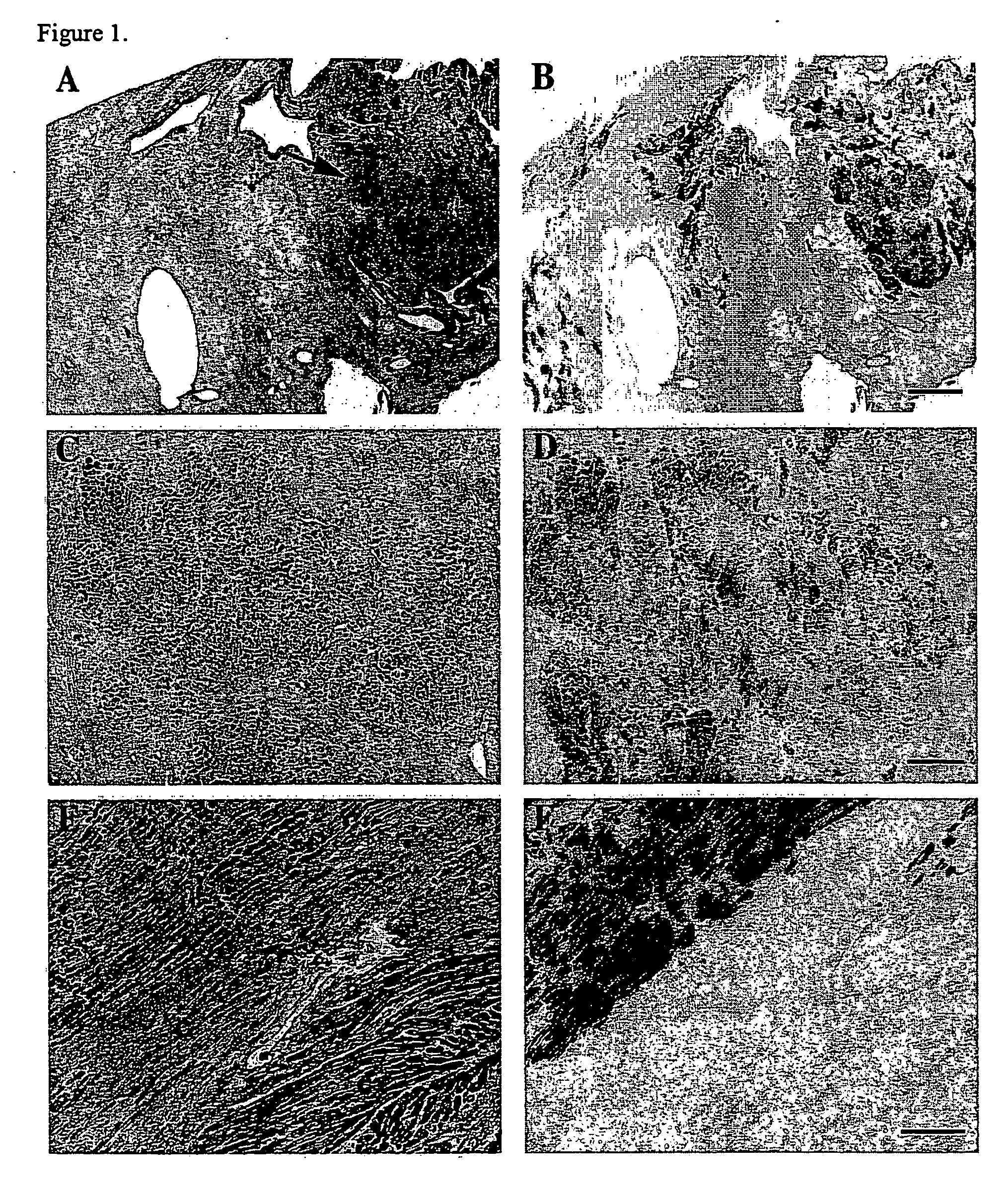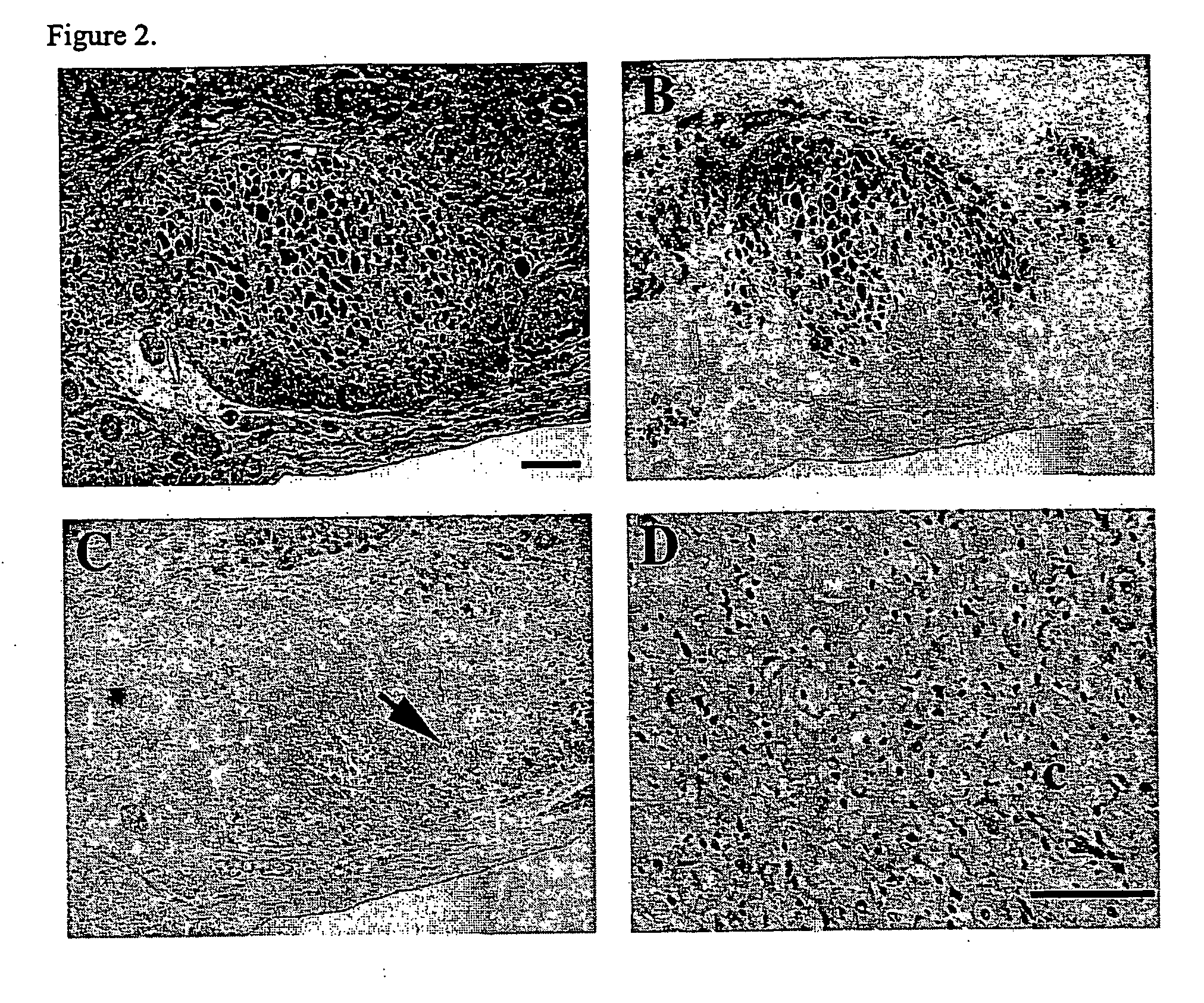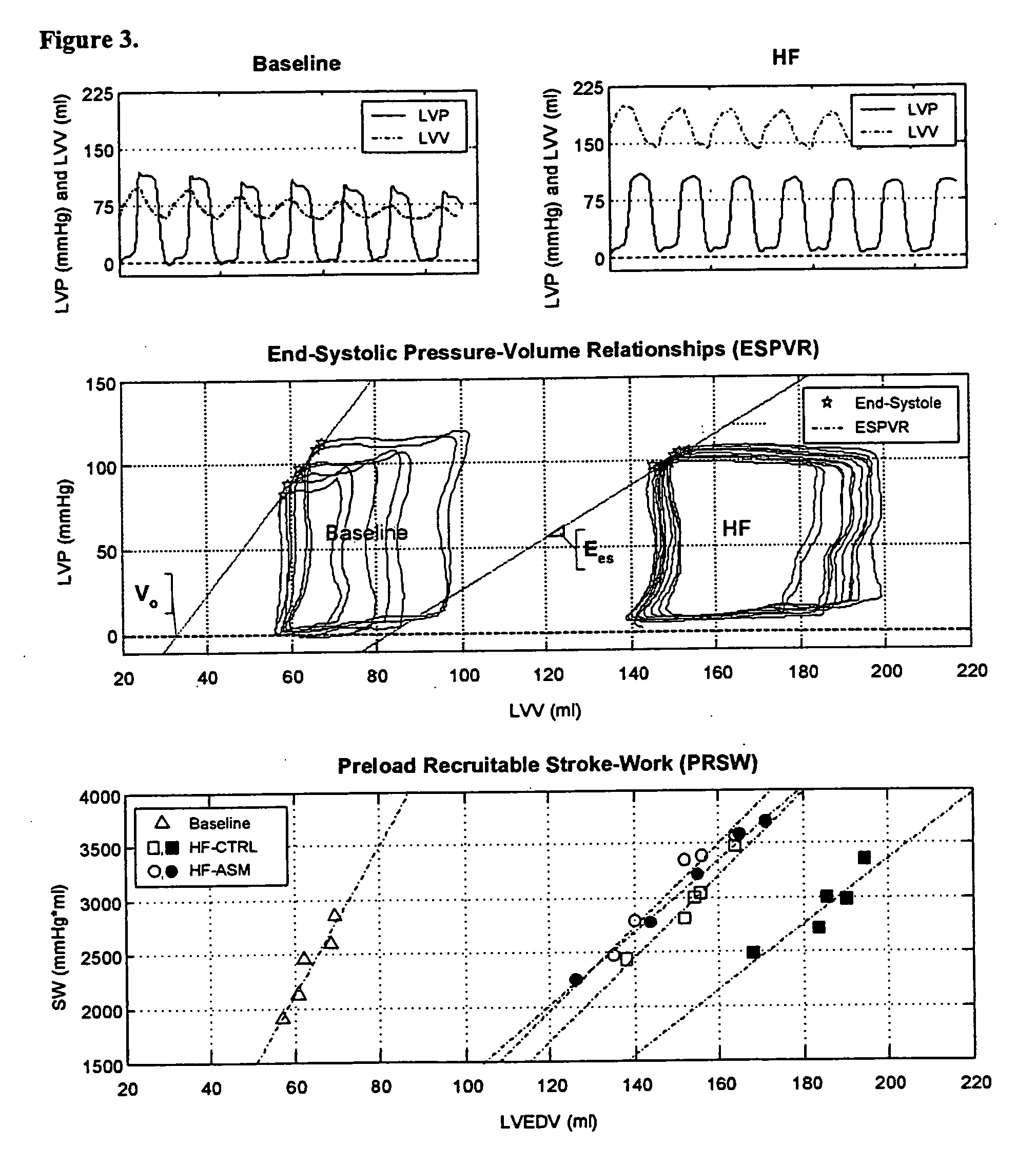Treatment for heart disease
a heart disease and treatment option technology, applied in the field of heart disease treatment, can solve the problems of poor survival rate of cellular grafts, limited treatment options, and no functional advantages have been demonstrated between stem cell and skeletal myoblast implantation, so as to reduce heart remodeling, improve cardiac function, and poor cell survival
- Summary
- Abstract
- Description
- Claims
- Application Information
AI Technical Summary
Benefits of technology
Problems solved by technology
Method used
Image
Examples
example 1
Correlation of Autologous Skeletal Myoblast Survival with Changes in Left Ventricular Remodeling in Dilated Ischemic Heart Failure
Introduction
[0067] Autologous skeletal myoblast (ASM) transplantation, or cardiomyoplasty, has been shown in multiple experimental studies to improve cardiac function after myocardial infarction (MI) (Chiu et al. “Cellular cardiomyoplasty: myocardial regeneration with satellite cell implantation”Ann. Thor. Surg. 60:12-18, 1995; Li et al. “Cardiomyocyte transplantation improves heart function”Ann. Thor. Surg. 62:654-61, 1996; Murry et al. “Skeletal myoblast transplantation for repair of myocardial necrosis”J Clin. Invest. 98:2512-23, 1996; Scorsin et al. “Comparison of effects of fetal cadiomyocyte and skeletal myoblast transplantation on postinfarction left ventricular function”J. Thor. Cardiovasc. Surg. 119:1169-75, 2000; Tambara et al. “Transplanted skeletal myoblasts can fully replace the infarcted myocardium when they survive in the host in large n...
example 2
Treating Chronic Heart Failure using Inventive Pro-angiogenic Cell Implantation Strategies
Background and Significance
[0104] Fifty percent of deaths attributed to cardiovascular disease result from coronary artery disease (CAD), a condition associated with narrowing of the coronary arteries, and reduced blood flow to the heart. Although there has been a 54% decrease in mortality from CAD since 1967 due to continued advances in the treatment of cardiovascular diseases by medical and surgical therapies and preventative measures, CAD remains the leading killer of men and women in the United States (American Heart Association. Heart and Stroke Statistical Update, 2003; incorporated herein by reference). Aside from the burden of morbidity and mortality to these individuals, the societal economic burden of CAD is significant, with an estimated annual cost of $56 billion (Goldfarb et al. “Impact of appropriate pharmaceutical therapy for chronic conditions on direct medical costs and work...
example 3
Treatment with Skeletal Myoblasts and VEGF in Sheep Model of Heart Failure
Anesthesia Protocol
[0195] Sheep are anesthetized for the procedures and surgeries described below. After sedation with an intramuscular (IM) injection of telazol, a catheter is placed into the dorsal ear vein or jugular vein for administration of thiopental (2-4 mg / lb IV) or etomidate (0.75-1.5 mg / lb IV) for anesthetic induction. An intravenous (IV) antibiotic injection of cefazolin (1.0 gm / 5 mL), cefoxitin (1.0 gm / 10 mL), and / or vancomycin (1.0 gm / 10 mL) is administered. Orotracheal intubation is performed and anesthesia is maintained with 1-3% isoflurane and 100% oxygen. Positive pressure ventilation (10-15 ml / kg) and maintenance IV fluids (0.9% NaCl or lactated Ringer's solution {fourth root} 10 cc / kg / hr) are maintained. A fentanyl bolus and subsequent drip is administered concurrent with isoflurane administration to provide additional analgesia during the surgeries.
[0196] The following drugs are given ...
PUM
| Property | Measurement | Unit |
|---|---|---|
| time | aaaaa | aaaaa |
| distance | aaaaa | aaaaa |
| temperature | aaaaa | aaaaa |
Abstract
Description
Claims
Application Information
 Login to View More
Login to View More - R&D
- Intellectual Property
- Life Sciences
- Materials
- Tech Scout
- Unparalleled Data Quality
- Higher Quality Content
- 60% Fewer Hallucinations
Browse by: Latest US Patents, China's latest patents, Technical Efficacy Thesaurus, Application Domain, Technology Topic, Popular Technical Reports.
© 2025 PatSnap. All rights reserved.Legal|Privacy policy|Modern Slavery Act Transparency Statement|Sitemap|About US| Contact US: help@patsnap.com



